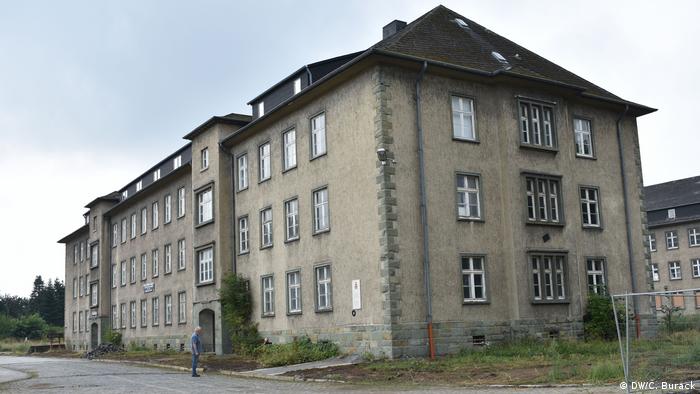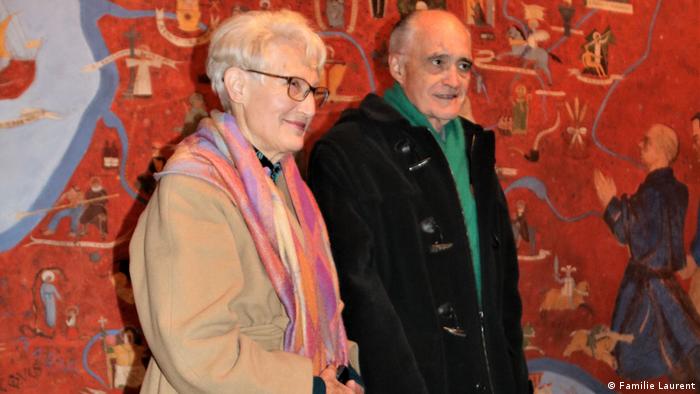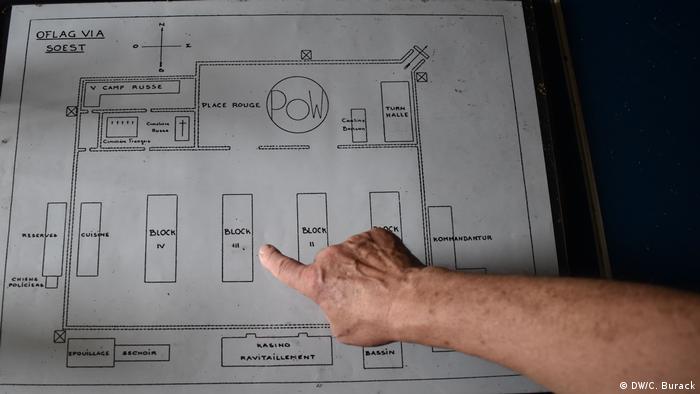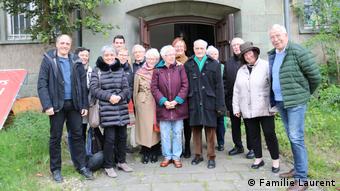If the walls could speak, what would – and should – tell you? In the case of a former barracks complex of the Nazi era, the city is doing a hard Soest. Because of the location there are many stories that overlap.

The town of Soest, about 50 kilometres East of Dortmund, is rich in medieval and Hanseatic history. The half-timbered houses and unique churches and city walls from the 12th century. Century are a magnet for tourists. Only five minutes by car, behind these walls, a fenced-in area with a gray, side-lined buildings. The abandonment of the complex belies its historical importance across, starting with the construction by the Nazis.
A small plaque identifies the building as the former barracks of the Belgian soldiers during the decades of the Cold war. On the historical specificity in the roof of the same house, nothing draws: a chapel with floor-to-ceiling murals, painted by French prisoners of war during the Second world war. The chapel stands today as a memorial for the victims of the Nazi regime under monument protection.

The murals in the French chapel, painted in 1940 by two French prisoners of war
Dispute over the weighting of historical events
In the past few years, the city of Soest, has established next to the chapel, a permanent Museum. It came to fundamental disagreements about what the Museum should remember. Because the story of the French prisoners is only one of a series of important events that took place here, and for the history of the city in the 20th century. Century are significant.
A large role was played by a non-profit organization called “history workshop French chapel” (GRP). Since 1997, the volunteers take care of the chapel, they research about the life of the French officers and other barracks residents. They also lead visitors through the chapel, among them, the former prisoners of war and descendants. One of them is Pierre Laurent, the GRP has invited Both his father and his uncle had been kept during the Second world war in the Soester complex caught.

Pierre Laurent visited the chapel with his wife France. His father and uncle were detained there.
Living Family History
“My father has practically never spoken about what he has in this camp have been through,” says Laurent DW. “Our visit in may, in the barracks was particularly moving, because we have experienced many things, of which we knew nothing.” Also, solidarity on the part of the GRP and the way how she takes care of the memory of the French prisoners, would have touched him.
About the experiences of French prisoners of war little is known. As Laurent’s father and uncle many prisoners talked after the return to the family, rarely about their experiences, and the researchers of the Second world war have focused mainly on those victims of war who were oppressed under the Nazis more.
“The whole room illuminate”
Originally, it was the desire of the GRP, the focus of the Museum is alone in the chapel, and the French prisoners of war, in order to strengthen German-French relations. With this specialization, the Soest Museum would have been the first of its kind in Germany. The city decided, however, the history of the Belgian troops that were stationed during the Cold war, to include.
Ulrike Gilhaus, Director of the Museum office of the Landschaftsverband Westfalen-Lippe, proposes a holistic approach. You have been asked by the town of Soest to their Expertise. A pure focus on the French prisoners of war would not be sufficient, she says, compared to the DW. “A Geschichtsort must be shown in its entire temporal layering,” said Gilhaus. Anything else would be “as if we go down to the basement and Shine a flashlight on an item. Then you don’t have to learn the whole room. I wanted the whole room to illuminate.”
Many different fates
In this case, the space has many elements that should be illuminated. The barracks were built in 1938 by the Nazis. During the Second world war, many Soviet prisoners of war, inter were next to the French, the Belgians and the Dutch returned. In contrast to their West European suffering, the Soviets were not, however, enjoyed under the protection of the Geneva Convention of 1929. You had to much to endure inferior conditions; she experienced abuse, and Hunger, and have not been treated in case of illness.

Plan of the former prisoner-of-war camp in Soest
After the end of the war to 300,000 forced laborers lived in the former barracks, followed by German war refugees from the former territories in Central and Eastern Europe. From 1951 to 1994 finally, here Belgian soldiers were stationed.
From construction to today
Gilhaus is of the opinion that the exhibition will begin with the construction of the complex and the history of its use and its occupants today should trace always closely linked with the history of the city of Soest. The different experiences of French and Soviet officers were especially important, stresses Gilhaus.
“Some are worth it, to know a better treatment, the others are at the end of the ethnic hierarchy, and have experienced a considerably lower support in all the necessities of life. This ethnic hierarchy is a typical feature of national socialism,” she explains.
The proposals of the Museum’s expert led to the GRP Chairman, had argued for a narrow focus, stepped back, but the current Deputy head of the group, Werner song man, welcomes the holistic approach. To understand “history, you have to take all the groups of victims with the view.”, he says. Song man believes that the French prisoners and the chapel will be honored by the Installation of the Museum next door is sufficient. “With a view to the history we leave this place and make new relationships,” whether with foreign visitors, or the town of Soest, he said.

Welcomes a holistic approach for the new Museum: Werner song man of the “history workshop French chapel”
The development of a culture of remembrance
Song man believes it is crucial to have a connection to Soest, as the city’s awareness of your history of the 20th century. Century, lacked: “We have in the city with very little culture of remembrance.” His aim is “to make the Soestern aware, this is part of your history, what happened here, and not a Phantom, which happens to be landed in Soest.”
Ulrike Gilhaus agreed that the city was important to have a space that tells its history during the Nazi period, because something is missing so far: “We have in Soest, a whole series of museums; but there is no place that addresses really the history of national socialism.”

Three generations of the Laurent family met in Soest with members of the GFK
The mediation of the story through the exchange of
The proposed Museum must be cost-neutral; without third-party funding, it will not be feasible, said Maria-Luise Pepinghege, the Chairman of the culture Committee of the city government, the DW. Your Committee is of the 12. September to decide on the size of the future Museum. A larger space is for the broader approach is essential, but requires more resources.
The “history workshop” is waiting for the decision. You should on the 12. September fall. Song man has made it clear that the GRP will only remain on Board, if the resulting proposal provides enough space and resources for the group, the personal education work she is doing for years, with visitors to the chapel, to continue. The teaching of history one could learn only in exchange with people, this is the only way possible, “that there is a to each other. And what Europe needs more than that?”